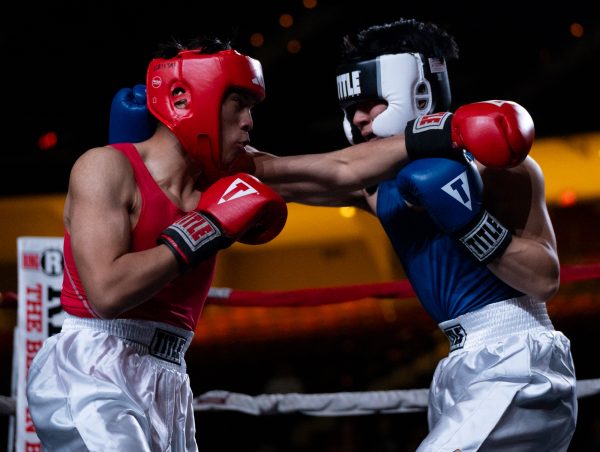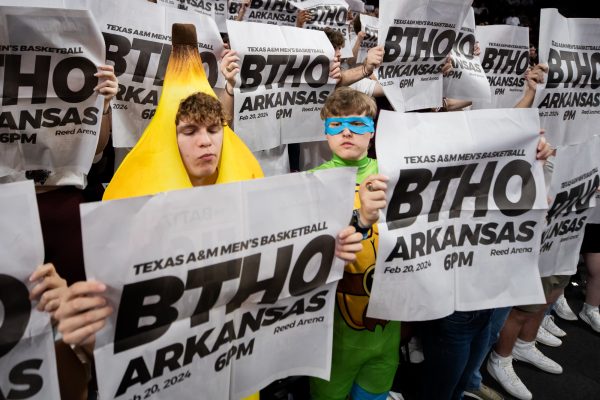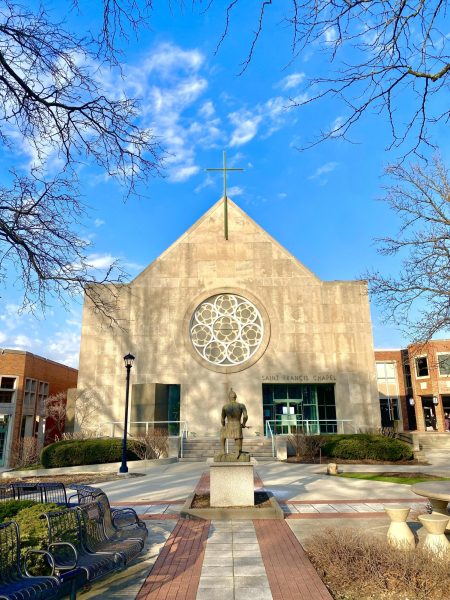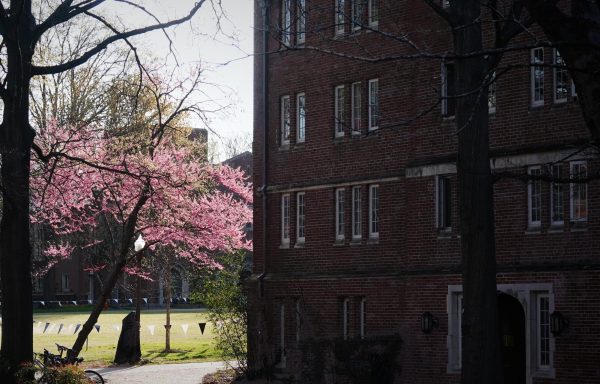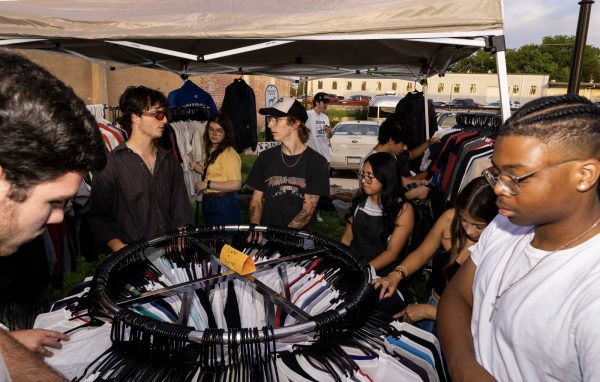FAU to spend at least $2.5 million to join the American Athletic Conference
The university will strike new monetary agreements once the change happens, including a television deal with ESPN.
Eston Parker III, Michelle Rodriguez-Gonzalez
Willie Taggart (left), John Kelly (center), and Brian White (right) speak following FAU’s victory over FIU on Oct. 2, 2021.
December 16, 2021
During a press conference on Oct. 21, Florida Atlantic University officially accepted an invitation to the American Athletic Conference (AAC), where they are projected to begin playing by 2023. This will bring many financial changes to the university, including a new television agreement.
“I know when coach [Howard] Schnellenberger started this [football] program, he had big dreams,” football head coach Willie Taggart said in a post-game press conference on Oct. 21. “I think that’s what we’re seeing is those big dreams [are] still alive and starting to come together slowly, but surely.” Schnellenberger was the first head coach at FAU from 2001 to 2011.
Exit Fees
The university will have to pay an undisclosed exit fee to Conference USA (C-USA) before it can officially leave, then they will be required to pay an entry fee to the AAC. Yahoo! Sports reported in an article on Old Dominion’s exit that the fee to leave C-USA is $3 million, but the UP was unable to verify those claims.
FAU Athletics Director Brian White declined to provide the entry fee. AAC assistant commissioner Charles V. Sullivan projects the entry fee to be $2.5 million, as it has been in years past.
University President John Kelly said in an interview with the UP that White will be in charge of finances when he talked with the AAC.
Facilities
Both Kelly and White believe that improvements upon athletic facilities will help build the school’s “brand.”
“There’s a lot of ways to raise reputation, obviously [our] academic reputation has been improving steadily, but when you raise the athletic reputation, you have a lot more eyeballs on you,” Kelly said. “You have a lot of people that are watching the program, they are seeing which direction you’re going with the program.”
Kelly explained that the school has been building on its brand for about seven years so they can make the move to what he and other administrators believe is a better conference.
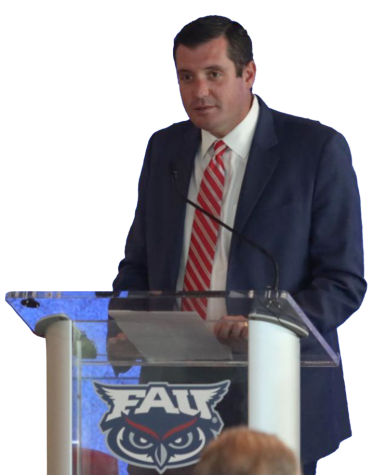
Richard Schmidt is the largest donor in school history, according to Kelly. About seven years ago, the two discussed why private funding options might be necessary to improve the university’s athletics facilities. The thought was that doing so might attract representatives from other conferences.
In 2019, the university opened its Schmidt Family Complex, an athletics facility adjacent to the football stadium. According to BarCharts Publishing, the cost to build the complex was over $45 million.
“We have a lot of facility improvement plans right now,” White said. “I think that’s why we are fortunate to be where we are. I think the [AAC] was looking for schools that are aggressively looking to improve and they saw that.”
Kelly said that there are plans to improve the baseball stadium and the basketball arena as well, but didn’t specify on details.
Television Deals
One of the biggest draws to the AAC for FAU is the new monetary deals it will bring. C-USA currently gives its schools $500,000 annually while the AAC provides $7 million, according to the Palm Beach Post.
Part of the funding comes from the television deals that the conferences have with major media companies. C-USA has a deal with CBS Sports, while the AAC airs most of its games on ESPN’s brand of networks.
“I think the exposure is more important than the revenue,” White said.
White believes anytime a nationally broadcasted sporting event is happening on campus, it is like having a three-hour-long infomercial.
“The most important thing is exposure for our student-athletes and university,” White said. “I think that us competing at a higher level is a great thing as well.”
The three schools leaving will have to pay an exit fee of $10 million, but professor James Riordan, director of the university’s MBA in Sport Management program, believes FAU will not see that money because they were not involved when those schools announced their exit.
“Everyone talks about extra money from the exit fees that UCF, Cincinnati, and Houston have to pay, although FAU probably won’t see any of that because they weren’t in,” Riordan said.
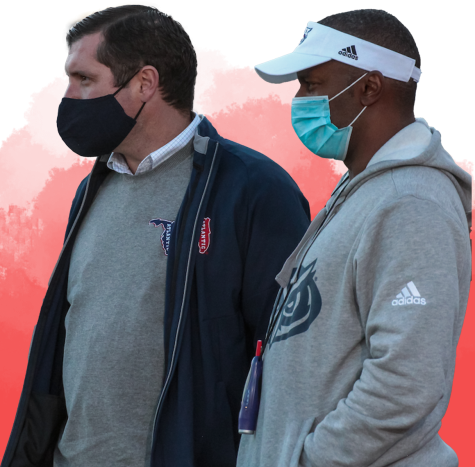
Anytime there is a match between AAC schools, the school’s name will be given exposure as there will be an advertisement airing that includes the logo of each university. A football game between Southern Methodist University (SMU) and Tulane University would be an example of this.
“FAU may not be on that particular game, but they will talk about the conference, and there will always be a conference commercial on [the game], and FAU will get exposure as well,” Riordan said.
Recruiting
This exposure will change the way that coaches will have to recruit athletes, too.
“Instantly it’s a challenge in recruiting, to start recruiting at a higher level, but it also gets you in more conversation because of the conference affiliation,” men’s basketball head coach Dusty May said.
The coaches can use television exposure to help recruit athletes to the school.
“[Student-athletes] can recognize some of the teams in the league a little bit more easily,” said women’s basketball head coach Jennifer Sullivan. “We just talk about the national attention [student-athletes] will receive with some of the schools that are in the league.”
Riordan said that these new schools are not only big football markets but big cities where there is easy access, as opposed to places like Marshall, located in Huntington, W.Va.
“The travel time will be easier and the travel logistics will be much easier for schools,” Riordan said. Five other former C-USA schools will join FAU: Charlotte, North Texas, Rice, the University of Alabama at Birmingham (UAB), and the University of Texas at San Antonio (UTSA).
“We looked at schools that were in bigger markets because that’s been part of our DNA,” AAC commissioner Mike Aresco said. “It’s part of who we are.”
FAU will be a part of this conference by 2023 and aims for higher academic competitiveness along with the change.
“I think the athletics will help the academics, and vice versa,” Riordan said. “When I first got here [in 2000], FAU was everybody’s second choice. Now, they are coming to FAU first because they know they can’t use it as a second choice.”
Editor’s Note: This story is a part of our December/January issue titled “Unfinished Business,” which you can pick up on campus or read online here.
This story was originally published on University Press on December 12, 2021.



























![IN THE SPOTLIGHT: Junior Zalie Mann performs “I Love to Cry at Weddings,” an ensemble piece from the fall musical Sweet Charity, to prospective students during the Fine Arts Showcase on Wednesday, Nov. 8. The showcase is a compilation of performances and demonstrations from each fine arts strand offered at McCallum. This show is put on so that prospective students can see if they are interested in joining an academy or major.
Sweet Charity originally ran the weekends of Sept. 28 and Oct. 8, but made a comeback for the Fine Arts Showcase.
“[Being at the front in the spotlight] is my favorite part of the whole dance, so I was super happy to be on stage performing and smiling at the audience,” Mann said.
Mann performed in both the musical theatre performance and dance excerpt “Ethereal,” a contemporary piece choreographed by the new dance director Terrance Carson, in the showcase. With also being a dance ambassador, Mann got to talk about what MAC dance is, her experience and answer any questions the aspiring arts majors and their parents may have.
Caption by Maya Tackett.](https://bestofsno.com/wp-content/uploads/2024/02/53321803427_47cd17fe70_o-1-1200x800.jpg)
![SPREADING THE JOY: Sophomore Chim Becker poses with sophomores Cozbi Sims and Lou Davidson while manning a table at the Hispanic Heritage treat day during lunch of Sept 28. Becker is a part of the students of color alliance, who put together the activity to raise money for their club.
“It [the stand] was really fun because McCallum has a lot of latino kids,” Becker said. “And I think it was nice that I could share the stuff that I usually just have at home with people who have never tried it before.”
Becker recognizes the importance of celebrating Hispanic heritage at Mac.
“I think its important to celebrate,” Becker said. “Because our culture is awesome and super cool, and everybody should be able to learn about other cultures of the world.”
Caption by JoJo Barnard.](https://bestofsno.com/wp-content/uploads/2024/01/53221601352_4127a81c41_o-1200x675.jpg)







